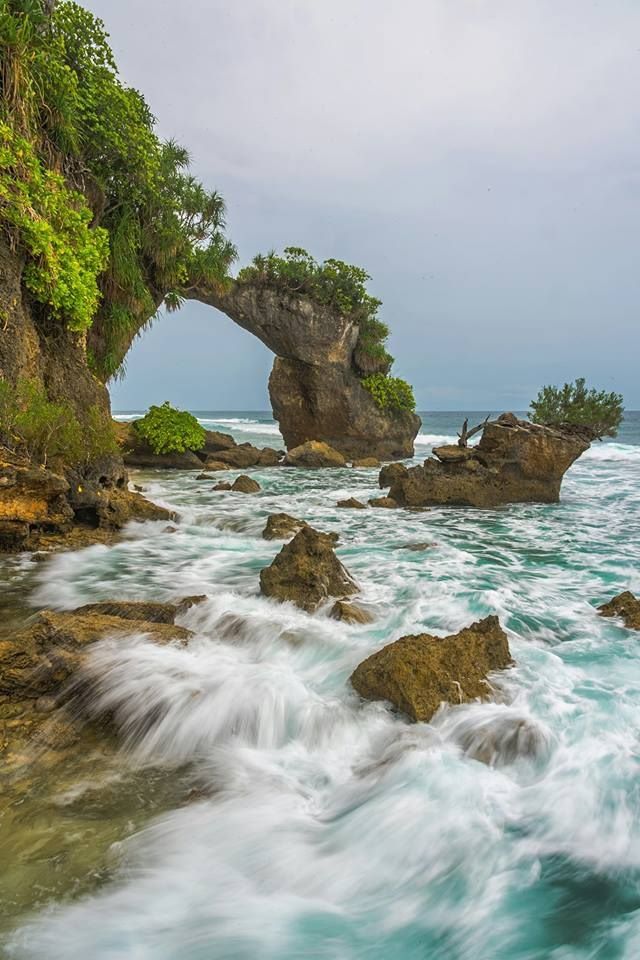Stunning Facts About Havelock Island That Will Amaze You
Havelock Island, officially known as Swaraj Dweep, is one of the most enchanting islands in the Andaman and Nicobar archipelago of India. Renowned for its pristine beaches, turquoise waters, coral reefs, and lush greenery, Havelock Island has emerged as a paradise for travelers seeking serenity, adventure, and a deep connection with nature. This island offers more than just scenic beauty—it has a fascinating history, cultural significance, and ecological importance.
- History of Havelock Island
- Key Facts About Havelock Island
- Timeline of Havelock Island
- Significance of Havelock Island
- Daily Life Impacts
- Observance and Important Points
- FAQs About Havelock Island
- Social and Cultural Significance
- Wishing and Inspirational Perspective
- Conclusion: Importance in Daily Life and Society
In this article, we explore Havelock Island’s history, key facts, timeline, significance, FAQs, societal and cultural impact, daily life relevance, and inspirational perspective, written in a friendly, human-centered style.
History of Havelock Island
Havelock Island has a rich and layered history:
Colonial Era: The island was named after Major General Sir Henry Havelock during British colonial rule, honoring his role in India’s 1857 uprising.
Pre-Independence: The island was sparsely inhabited and used mainly by indigenous tribes for hunting and fishing.
Post-Independence: After India gained independence in 1947, Havelock Island developed gradually as part of the Andaman and Nicobar Islands Union Territory. In 2018, it was officially renamed Swaraj Dweep, symbolizing India’s independence and self-rule.
Tourism Development: The late 20th century saw the growth of eco-tourism, resorts, and infrastructure, making it a top destination for beach lovers, scuba divers, and nature enthusiasts.
Key Facts About Havelock Island
Location & Size: Havelock Island is part of Ritchie’s Archipelago, approximately 41 km east of Port Blair, the capital of the Andaman Islands.
Beaches: Famous beaches include Radhanagar Beach (voted Asia’s best beach), Elephant Beach, and Vijay Nagar Beach, each offering pristine sands and clear waters.
Scuba Diving & Snorkeling: The island is renowned for vibrant coral reefs, diverse marine life, and excellent diving spots.
Population: The island has a small local population, primarily engaged in tourism, fishing, and handicrafts.
Flora & Fauna: Dense tropical forests host exotic plants, birds, and butterflies, while marine life includes colorful fish, turtles, and manta rays.
Adventure Activities: Trekking, kayaking, snorkeling, and diving are popular among adventure seekers.
Accommodation: Eco-resorts, beachside cottages, and homestays cater to diverse traveler preferences.
Climate: Tropical climate with humid summers, monsoon rains from June to September, and pleasant winters from November to March.
Connectivity: Accessible via ferry or speedboat from Port Blair; nearest airport is Veer Savarkar International Airport in Port Blair.
Timeline of Havelock Island
Pre-Colonial Era: Inhabited by indigenous tribes and isolated communities.
1857: Named Havelock Island by British rulers after Sir Henry Havelock.
1947: Becomes part of independent India.
Late 20th Century: Growth of tourism and infrastructure.
2018: Officially renamed Swaraj Dweep, honoring India’s independence.
21st Century: Recognized globally for eco-tourism, diving, and marine conservation.
Significance of Havelock Island
Ecological Significance: Havelock’s coral reefs, forests, and marine ecosystems are vital for biodiversity conservation.
Tourism & Economy: Tourism provides employment for locals and supports businesses like resorts, restaurants, diving schools, and handicraft shops.
Cultural Importance: The island represents the fusion of indigenous traditions and modern tourism culture.
Scientific & Educational Value: Coral reefs, marine life, and forest ecosystems attract researchers, marine biologists, and environmentalists.
Inspirational & Recreational Value: The serene beaches, crystal-clear waters, and natural surroundings provide relaxation and inspiration for travelers and artists.
Daily Life Impacts
Employment Opportunities: Tourism, diving schools, eco-resorts, and restaurants are major sources of income for residents.
Community Development: Infrastructure development, healthcare, and education improve daily life for locals while supporting tourism.
Environmental Awareness: Residents actively participate in eco-friendly practices, waste management, and conservation programs.
Cultural Preservation: Local crafts, festivals, and traditions are maintained while interacting with tourists.
Connectivity & Accessibility: Ferry services, transport, and modern amenities make daily commuting and logistics easier.
Observance and Important Points
Eco-Friendly Practices: Avoid littering, respect marine life, and use reef-safe sunscreen while diving or snorkeling.
Cultural Etiquette: Seek permission before photographing locals; respect private property and indigenous areas.
Safety Precautions: Monsoon season brings heavy rains; trekking, boating, and diving require safety measures.
Accommodation Planning: Book resorts or homestays in advance, particularly during peak tourist season (November to March).
Support Local Economy: Purchase local handicrafts, seafood, and organic products to contribute to sustainable tourism.
FAQs About Havelock Island
Q1: What is the best time to visit Havelock Island?
A: November to March offers pleasant weather, ideal for beach activities, diving, and trekking. Monsoon season is less recommended due to heavy rains.
Q2: How do I reach Havelock Island?
A: By ferry or speedboat from Port Blair; the journey takes approximately 1.5 to 3 hours depending on the vessel type.
Q3: What are the top beaches on Havelock Island?
A: Radhanagar Beach, Elephant Beach, Vijay Nagar Beach, and Kalapathar Beach are must-visit destinations.
Q4: Can I go scuba diving on Havelock Island?
A: Yes, the island offers world-class diving spots suitable for beginners and advanced divers, with vibrant coral reefs and abundant marine life.
Q5: Is Havelock Island suitable for family trips?
A: Absolutely. The island provides safe beaches, eco-resorts, gentle trekking trails, and family-friendly activities like kayaking and snorkeling.
Social and Cultural Significance
Heritage Preservation: Although modernized for tourism, Havelock Island maintains its natural beauty, ecological health, and local traditions.
Community Engagement: Tourism initiatives provide skill development and income opportunities for locals.
Environmental Awareness: Conservation projects protect coral reefs, marine life, and forests, promoting eco-consciousness.
Cultural Exchange: Visitors experience a blend of local customs, cuisine, and hospitality, fostering cross-cultural understanding.
Research & Education: Coral reefs and marine biodiversity attract scientists and students for research, promoting global awareness of conservation needs.
Wishing and Inspirational Perspective
Visiting Havelock Island encourages:
Mindfulness & Relaxation: Pristine beaches and peaceful surroundings provide a mental break from daily stress.
Adventure & Exploration: Trekking, diving, snorkeling, and kayaking inspire courage, curiosity, and physical fitness.
Cultural Respect: Interaction with locals encourages appreciation for traditions, sustainability, and hospitality.
Environmental Consciousness: Exposure to natural ecosystems fosters a deeper understanding of ecological balance.
Connection & Reflection: The island’s serene atmosphere allows travelers to connect with nature, self, and fellow visitors.
Conclusion: Importance in Daily Life and Society
Havelock Island is more than a tropical paradise; it is a symbol of natural, cultural, and economic significance. It impacts daily life by providing employment, improving infrastructure, promoting education, and fostering eco-friendly practices. The island’s ecological diversity, pristine beaches, coral reefs, and cultural heritage play an essential role in society, offering lessons in sustainability, conservation, and responsible tourism.
The 9 stunning facts about Havelock Island illustrate why it continues to captivate travelers from around the world. From adventure and relaxation to cultural engagement and environmental awareness, Havelock Island is a unique destination that enriches the mind, body, and soul while supporting the local community and preserving natural beauty.








